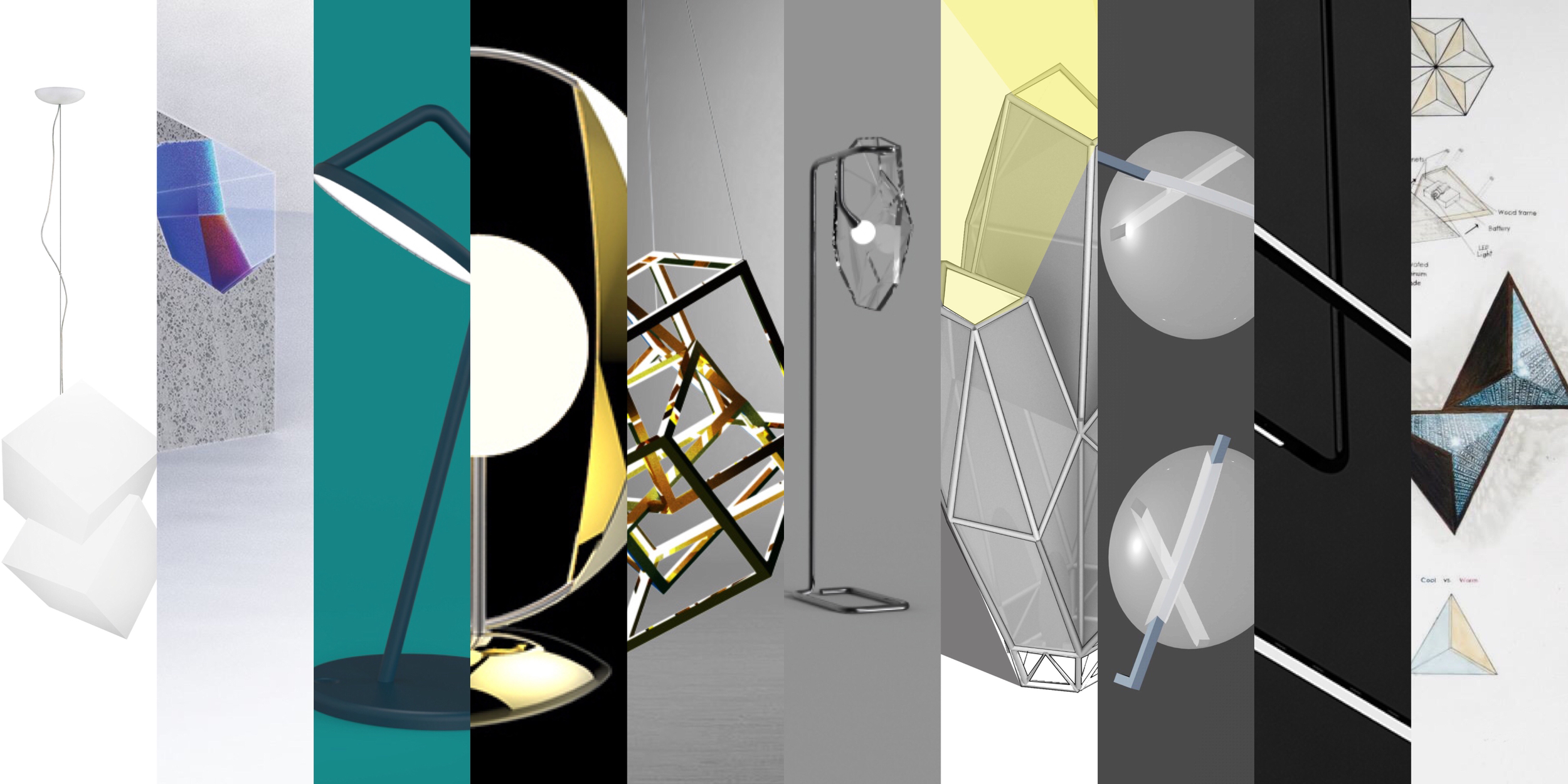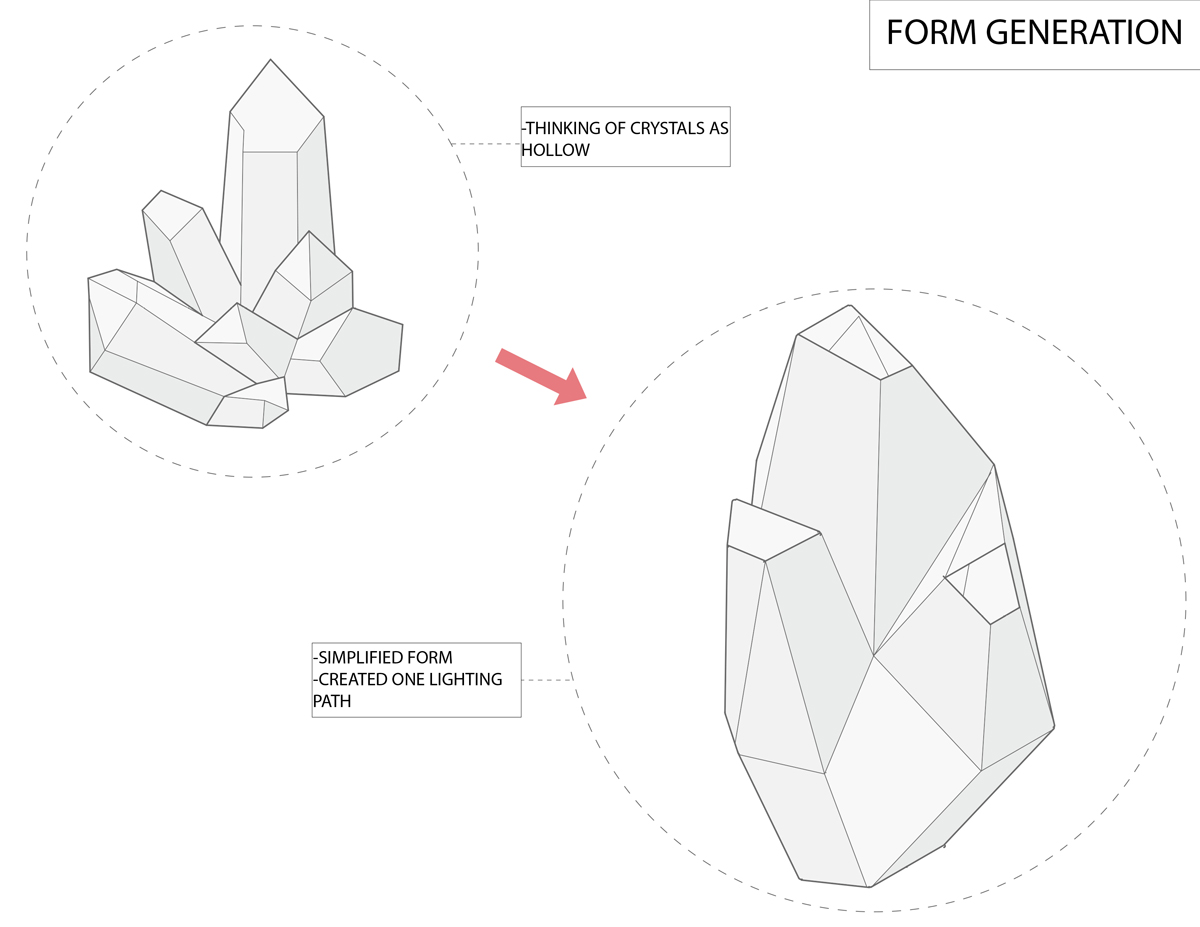Natalie Paolercio
Title:
QUARTZ
Concept Statement:
I started working with the form of the quartz crystal and how they cluster together, using my discoveries to generate forms. After a few iterations, I picked the one that would work best for a single tube light fixture at the base. Following this, I transformed the form into a stick frame that could have a skin applied to it. The concept was influenced by a student project I saw last semester that featured cone buildings capped by skylights. Although its form largely denoted to horizontality, the idea of creating a field of skylights lead me to consider a building as a lamp. It not only made me challenge ‘normal’ architectural design decisions (such as windows on walls over ceilings), but it also made me challenge what a ‘normal’ lamp is – why do most lamp shades cover their light source like a muzzle on a dog? That is why I chose to incorporate complex geometry that not only increases the range of lighting but also creates complex and varying shadows as opposed to a standard lamp shade. By manipulating light, one manipulates shadows.
Project Specs:
The lamp is versatile in both fabrication materials and aesthetic personalization. The frame could be made out of various materials (e.g. basswood connections, or soldered metal dowels). The frame is covered with a fabric skin (multiple designs and colors available); the clusters’ peaks are capped with a clouded plastic or thin glass panel. The lamp fixture is positioned at the base – able to be plugged into a wall outlet. The proposed height is anywhere between one to four feet. The lamp could be small enough to fit on a nightstand or large enough to cover a coffee table.
Bio:
My name is Natalie Paolercio. I am from San Jose, California but currently live in Los Angeles. I attend the University of Southern California and am in the fourth year of my five-year Bachelor of Architecture degree. My natural, deeply-rooted passion for architecture is definitely accredited to my parents. I was raised both by a contractor and ‘ornamenter’, thus I have been learning the art of building and decorating alongside my builder dad and designer mother. With each new facet of art I explore, the more I want to discover. In studio I am constantly inspired by the designs I see and find myself outside of class applying similar concepts to personal projects like lamps and ornaments. The indisputable link between architecture, building, lighting and furniture encourages me believe that it is a direction I can see myself going.
Place of Origin:
San Jose, California














































